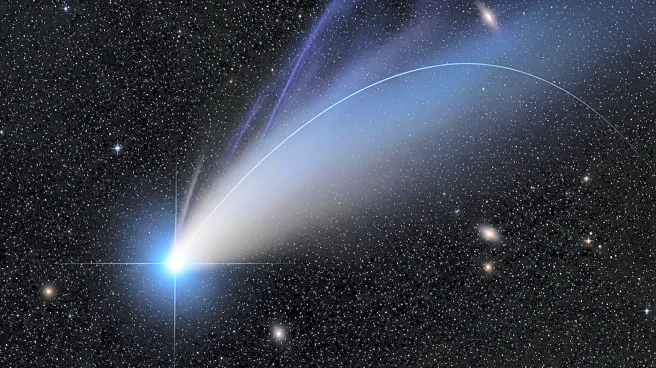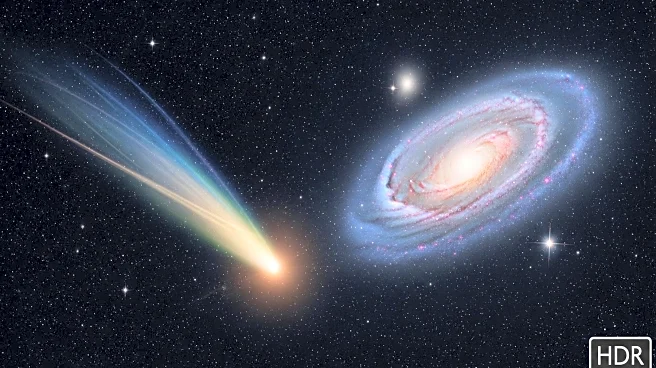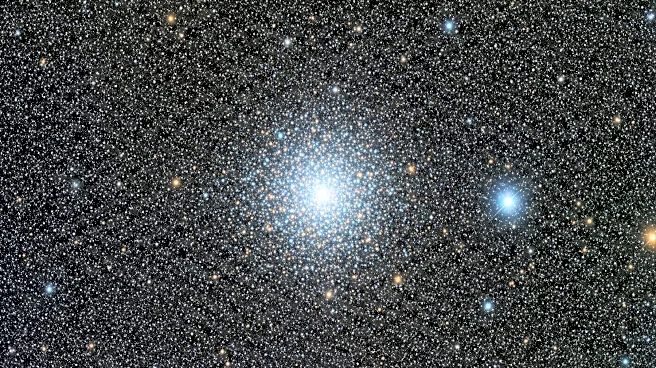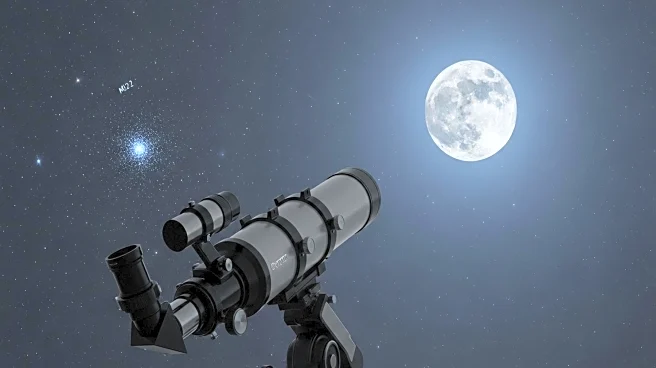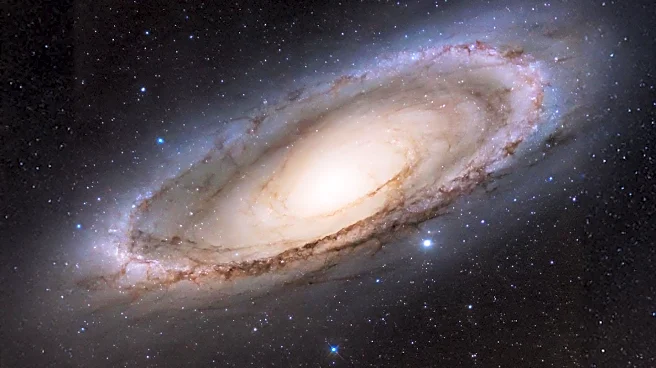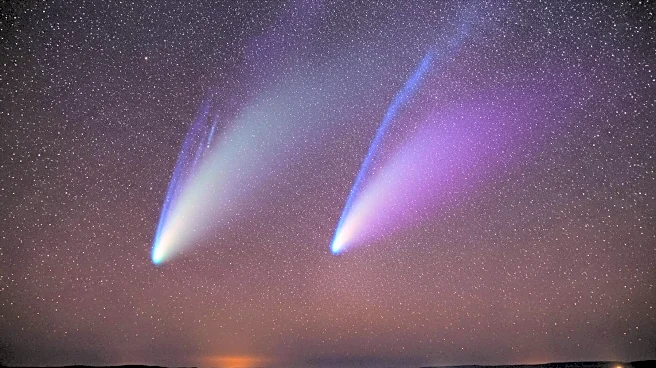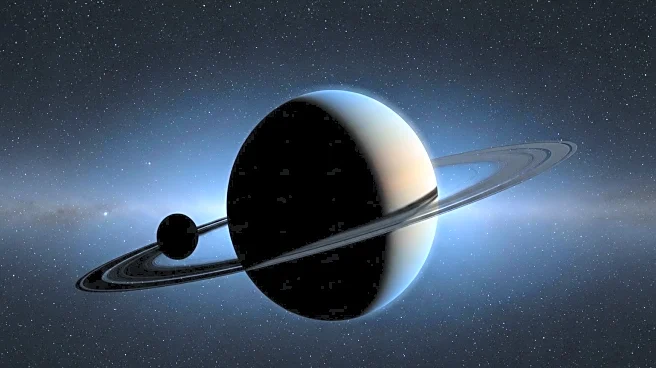What's Happening?
Comet C/2025 A6 (Lemmon) is currently visible in the constellation Ursa Major, offering a rare opportunity for observation. The comet will make its closest approach to Earth on October 21, 2025, coinciding with the New Moon, which will enhance visibility. Comet Lemmon's minimum distance from Earth will be 28.6 million miles. Observers are encouraged to view the comet in the early morning hours before sunrise, using binoculars or telescopes to capture its details. The comet's current orbital period is approximately 1,350 years, but this will be reduced to 1,150 years after its perihelion passage on November 8.
Why It's Important?
The appearance of Comet Lemmon provides a unique opportunity for astronomers and the public to observe a celestial body that won't return for over a millennium. Such events can increase public interest in astronomy and provide valuable data for scientists studying cometary behavior and composition. The comet's approach offers a chance to study its interaction with the solar wind and its effects on the comet's tail. For amateur astronomers, this is a rare chance to capture images and contribute to citizen science projects.
What's Next?
As Comet Lemmon approaches its closest point to Earth, astronomers and enthusiasts will continue to monitor its progress and capture images. The comet will move into different constellations, providing varied viewing opportunities. After its perihelion passage, the comet's altered orbit will be studied to understand the gravitational effects of the Sun. This event may inspire future missions to study comets and their role in the solar system's history.

